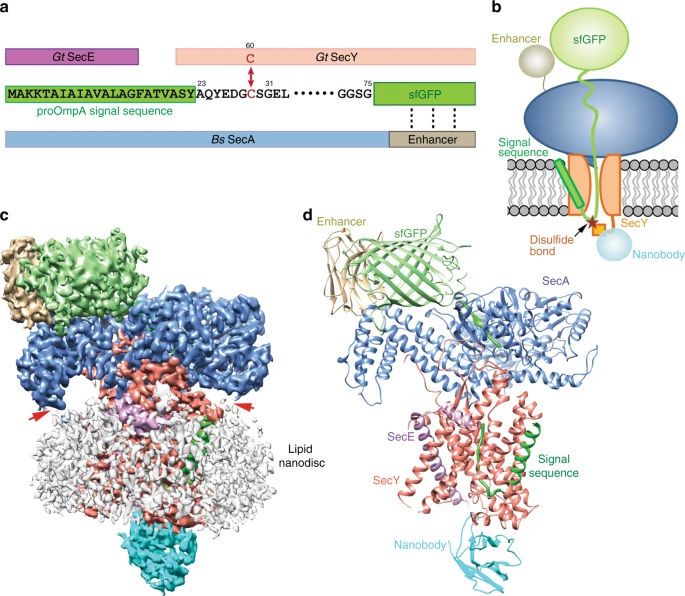Structure of the substrate-engaged SecA-SecY protein translocation machine
The Sec61/SecY channel allows the translocation of many proteins across the eukaryotic endoplasmic reticulum membrane or the prokaryotic plasma membrane. In bacteria, most secretory proteins are transported post-translationally through the SecY channel by the SecA ATPase. How a polypeptide is moved through the SecA-SecY complex is poorly understood, as structural information is lacking. Here, we report an electron cryo-microscopy (cryo-EM) structure of a translocating SecA-SecY complex in a lipid environment. The translocating polypeptide chain can be traced through both SecA and SecY. In the captured transition state of ATP hydrolysis, SecA’s two-helix finger is close to the polypeptide, while SecA’s clamp interacts with the polypeptide in a sequence-independent manner by inducing a short β-strand.

https://www.nature.com/articles/s41467-019-10918-2


